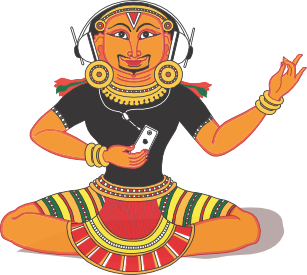
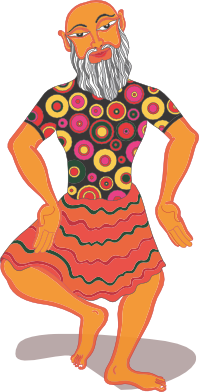
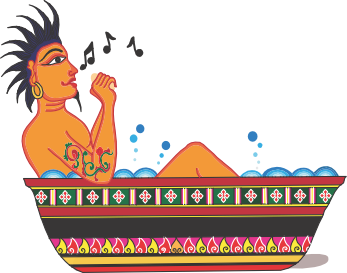
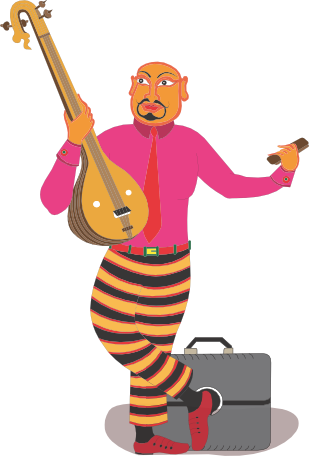
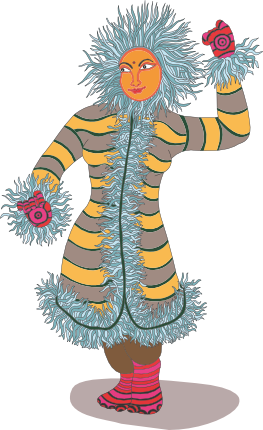
Posted by admin in Dance
on Jul 18th, 2012 | 0 comments
Kathak
Kathak is one of the eight forms of Indian classical dance and originated from Utthar Pradeśh, India. This dance form traces its origins to the nomadic bards of ancient northern India, known as Kathaks, or storytellers. The term Kathak is derived from Kathā meaning story.
History: Kathā or story telling were a part of religious functions. The stories were narrated by a group called Kathakas or story tellers. References to the Kathakas are found in epics like the Mahābhāratha, Rāmāyaṇā and books like the Nāṭya Śhāsthra. Kathakas interpreted stories through music and dance. A dance form called Rasa was performed by the Rasadhhārīs. They were a community of artists, who danced in praise of Lord Kriṣhṇa and Rādhhā. Those who performed Rāsa were called Rāsa Maṇḍalis. This dance was accompanied by a type of music called Kīrthan. Those who performed Kīrthan were called Kīrthana Maṇḍalis. Kathak is said to have evolved from Kīrthan music.
The Kathak style of dancing imbibed the broad principles laid down by the Nāṭya Śhāsthra and also developed its own style over an extensive period. Under the influence of Vaiṣhṇavism, Kathak adopted at its initial stage, the stories of Rādhhā and Kriṣhṇa, and narrated them through music, dance and drama. Later, when the Muslim rulers extended their patronage, it shifted from its original religious anchorage to a more secular character. The Muslim rulers adopted Kathak performances into their courts and the expectation of monetary rewards for performances worked as an incentive. In consequence the attitude of the connoisseur underwent a change. The artist’s attention was diverted more to giving expression to certain basic emotions rather than deeper aesthetic values. Ability in performance was judged by skilful execution of bodily movements rather than capacity to give expression to ideas. Kathak thus gradually became a source of amusement and lost its aesthetic appeal.
Dancers who were brought to India from the Middle East, during the Mughal period, spread their ideas to Kathak dancers, as they borrowed ideas from Kathak to implement in their own dance. Kathak absorbed the new input, adapting it until it became an integral part of its own vocabulary. Kathak also absorbed certain elements of classical Persian dance.
Kathak today, combines the court and romantic aspects as well as the temple and mythological aspects of its past. The 19th century saw the birth of Lucknow gharānā. It was under the patronage of Wājid Ali Śhāh, the last Nawāb of Oudh, that this school attained maximum growth. Ṭhākur Prasādh Maharāj a great exponent of this dance was appointed by Wājid Ali Śhāh as a court dancer. Paṇḍit Birju Maharāj, the great-grandson of Ṭhākur Prasādh Maharāj, is considered the chief representative of this style of Kathak.
Costume: The costumes used in Kathak are a mixture of Hindhu and Muslim cultures. The men wear a light pajāma and a waist coat or short Kurthīs. On the waist coat there is often a decorated chest belt full of gold and sparkles. Women wear a long pleated Kurthā over a pajāma, a brocaded cap and a duppatta. Sometimes they wear a long pleated skirt and a blouse with a duppatta. The dancer does not use heavy makeup. The dancer ties anklets on each foot.
Compiled by: Aarthi Natarajan & Indira Kadambi




